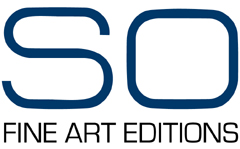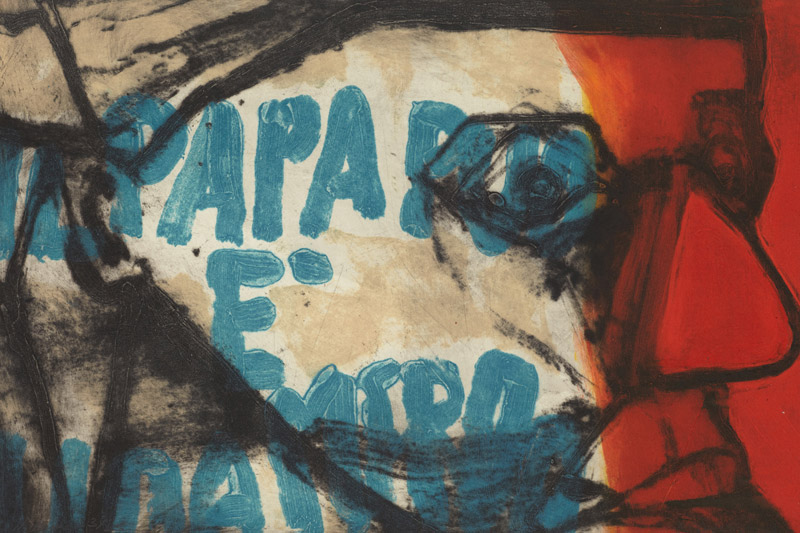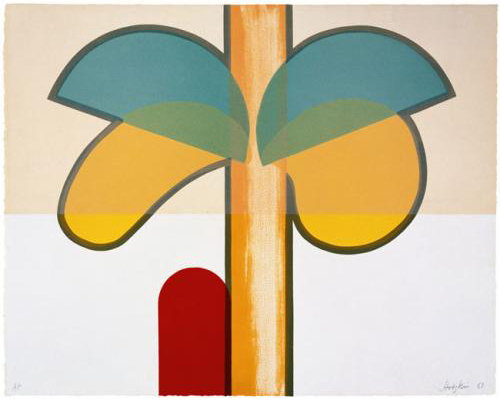A graphic or original print is the printed impression produced from a block, plate, stone, or screen on which the artist who conceived the idea has worked.
Because the artist has chosen to render the idea in ‘print’, it is possible to produce a number of identical images, each one an original work by the artist. After the total number of prints in the edition has been ‘pulled’, the blocks, plates, stones, or screens are defaced or recycled so that no further impressions may be taken.
In the past when great artists such as Durer and Rembrandt were working, the prints were unnumbered. In fact, it is only a modern convention to limit the edition, thus creating an increasing demand for the limited number and making them more desirable as an investment. There are many methods of making an original print, a few of which are explained in the next section – techniques.
Etching is an intaglio technique in which a print is taken from a sheet of metal, usually copper, zinc or steel, into which the drawing has been bitten with acid. It involves coating a metal plate with a thin acid resistant layer or ground, usually a a wax based resin. Using a sharp tool, a drawing is scratched into this layer leaving the metal exposed. The plate is then immersed in a bath of acid which ‘bites’ or etches away the metal in the areas exposed by the drawing. Once the lines have been etched to a sufficient depth the ground is cleaned off. Ink is rubbed into the lines of the design and the surface is wiped clean. A sheet of dampened paper is placed over the plate and it is then fed through a printings press under great pressure. This causes the ink to be pulled out of the incised lines onto the paper and creates the platemark.
Hughie O’Donoghue, Il Papa, Monotype
Monotype is a medium of printmaking made by drawing or painting on a smooth, non-absorbent surface. The surface, or matrix, was historically a copper etching plate, but in contemporary work it can vary from zinc or glass to acrylic glass. The image is then transferred onto a sheet of paper by pressing the two together, usually using a printing-press. Monotypes can also be created by inking an entire surface and then, using brushes or rags, removing ink to create a subtractive image, e.g. creating lights from a field of opaque colour. The inks used may be oil based or water based. With oil based inks, the paper may be dry, in which case the image has more contrast, or the paper may be damp, in which case the image has a 10 percent greater range of tones.
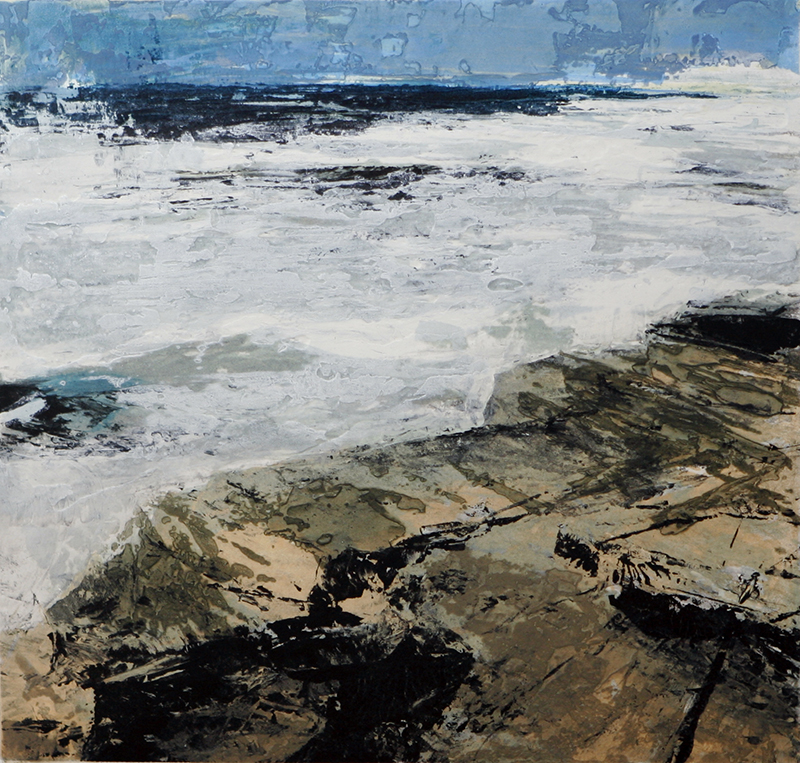 Donald Teskey, Fractured Shoreline IV, Carborundum
Donald Teskey, Fractured Shoreline IV, Carborundum
Carborundum is a grit (fine particles of metal filings or ground silicon carbide) In Printmaking this grit is made into a paste by mixing with an acrylic medium or glue. The image is then painted with this paste onto the plate(s) and allowed to dry. Inks are then applied to the plate and it is wiped and hand printed. When the plate is inked up the particles of silica hold onto the ink creating an interesting effect and a rich textural surface.
Howard Hodgkin, Indian Room, Lithograph
Lithography is a printing process that is based on the principle that oil and water do not mix. An image is drawn using a waxy crayon onto a lithographic stone. When the stone is subsequently moistened , an oil based ink is applied and would be repelled by the water, sticking only to the oiriginal wax based drawing. The image is then transferred to a sheet of hand made paper and printing using a traditional lithographic press.
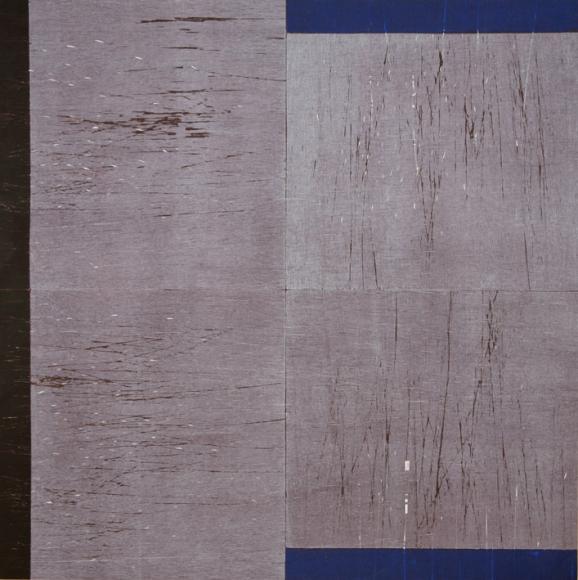 Charles Tyrrell, WB3.05, Woodblock
Charles Tyrrell, WB3.05, Woodblock
Woodblock is a printing technique where a block of wood is carefully cut away to make a relief pattern. The relief, or raised image, on the block will be transferred to the paper, while the cut away part of the wood will appear as white on the paper. The block is then covered with ink and pressed against the paper. In colour printing several blocks will be used. Woodblock printing started in East Asia, with earliest surviving examples from China date to before 220 AD, and woodblock printing remained the most common East Asian method of printing books and other texts, as well as images, until the 19th century.
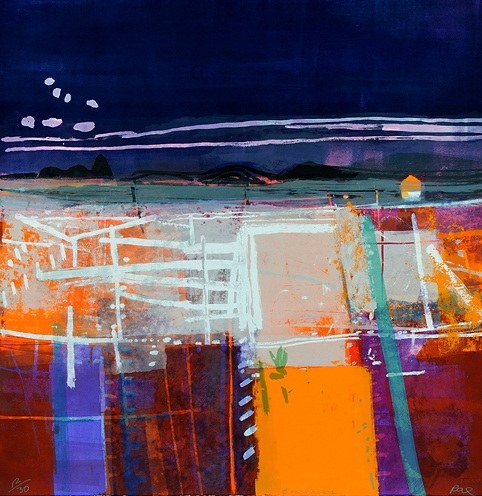 Barbara Rae, Broadhaven, Screen print
Barbara Rae, Broadhaven, Screen print
Screen printing is a printing technique that uses a woven mesh to support an ink-blocking stencil to receive a desired image. The attached stencil forms open areas of mesh that transfer ink through the mesh as a sharp-edged image onto the paper. A fill blade or squeegee is moved across the screen stencil, forcing or pumping ink through the mesh openings to wet the paper during the squeegee stroke. It is also known as silkscreen, serigraphy, and serigraph printing. One colour is printed at a time, so several screens can be used to produce a multicoloured image or design.
